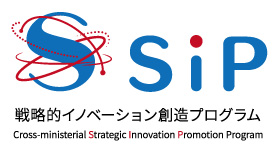B1-02 Development of recycled- and bio-plastic composites utilizing dry-defibrated post-consumer paper and garment waste
Principal Investigator
SEKI Shunichi (SEIKO EPSON CORPORATION)
Research and Development Overview
We aim to establish fiber composite material technology and molding technology that will resolve the mechanical performance issues that recycled- and bio-plastics and recycled plastics have, and to put them into practical use in society.
The goal is to realize material technology and molding processes that can achieve both the elastic modulus and impact resistance of recycled- and bio-plastics and ensure moldability through fiber composite technology. In addition, we will build a value chain that connects the results of technological development to social implementation, derive traceability requirements for the widespread use of these composite materials, and reflect them in the Plastics Information Distribution Platform (PLA-NETJ).
Specific efforts include characterizing composite materials using advanced analysis such as synchrotron radiation and simulation technology for fiber-composite plastics, in order to select the optimal types of plastic and fiber materials to improve the performance of the composite materials, and deriving optimal conditions such as fiber length, thickness, aspect ratio, density, dispersibility, orientation, and compatibility with resin. In addition, the mixing and pelletizing conditions and injection molding conditions for product implementation will be derived. Using the results of these technological developments, the company will establish a system for raw material procurement, pellet manufacturing, and quality assurance, and will first demonstrate the technology in its own products, and then expand it to automobiles, home appliances, and other products.
As a contribution to the SIP, we will establish the foundation for composite materials and molding technologies that achieve the performance of recycled- and bio-plastics required for a wide range of products, and provide them as core technologies for the circular economy system. Furthermore, through product demonstration activities for this technology, the company will promote the social implementation of the system by putting into practice an arteriovenous collaboration model. In addition, we will accumulate a database that includes quality data such as the physical properties of recycled- and bio-plastics and composite materials, as well as historical data on recycling, thereby contributing to the construction of the PLA-NETJ system. By utilizing tracer technology for material properties obtained during this material development process and informatics technology, we will contribute to the development of a platform for improving and visualizing circularity in this SIP.
Progress and Achievements
In order to utilize academic research knowledge and advance the development of basic technologies for fiber composite materials, we established a co-creation research institute at the Tohoku University Research Center for Green X-Tech and established a research and development system.
Based on this foundation, we have established a research infrastructure to establish the basic technologies for material technology and molding process technology for fiber-composite plastics by making full use of advanced analytical evaluation technology, material informatics, and process informatics.
We have been studying the establishment of technology for composite recycled- and bio-plastics using fibers defibrated from waste paper, garment, and wood, and have found that it is possible to control the mechanical properties of composite recycled clothing fiber plastics by changing the type and shape of the fibers used. As a result, we have achieved both impact resistance and elastic modulus, and have achieved the targeted mechanical properties equivalent to ABS.
In addition, we were able to achieve a low viscosity that is compatible with the molding process, and we were able to proceed with evaluation of the actual equipment with a view to incorporating it into our products. Furthermore, in order to verify scale-up, we have begun preparations for a large twin-screw kneader with a processing capacity of 100 kg/h, which is scheduled to start operation in the fall of 2025.
Furthermore, in order to build a value chain that will lead to social implementation, the company is considering procuring clothing waste from multiple apparel manufacturers, and has begun considering collaboration with external compounders to expand pellet production.

